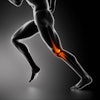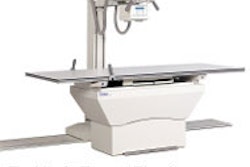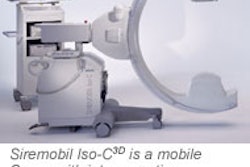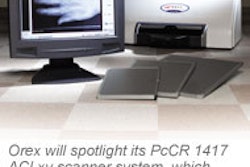VIENNA - Measuring the speed of sound in bones is a promising and radiation-free method of assessing bone health in children, and adults for that matter. However, early results in a small pediatric population of renal transplant patients did not yield convincing evidence that the method is ready for large-scale implementation.
"Osteoporosis is a major problem in children, and prevention is of great importance," said Dr. Hans-J. Mentzel from Friedrich-Schiller University in Jena, Germany, in a presentation at the European Congress of Radiology. He noted that current bone-mineral density assessment techniques such as dual-energy x-ray absorptiometry (DEXA) and peripheral quantitative CT (QCT) all produce ionizing radiation, which can be especially harmful to children.
Young patients with diabetes mellitus, hyperthyroidism, collagen disease, and those who have undergone renal transplantation and dialysis show "increased risk and incidence of skeletal symptoms and osteoporosis," he said, and "therefore, special attention has to be given to children at risk of low bone density."
In the study, quantitative ultrasound (QUS) was used to measure the speed of sound in the cortex of the radius in 13 patients (four girls, nine boys, mean 15.7 years), using the Sunlight 7000P Omnisense system (Sunlight Medical, Tel Aviv, Israel). The device can be used to investigate different anatomic sites in patients ranging from neonates to adults.
The device generates sonic pulses at a mean frequency of 1.25 MHz, Mentzel said. "Different probes for different anatomic locations are specially designed to measure the axial speed of sound along the surfaces of the bone...the probes transmit at one end and receive at the other. (Measurement) is a function of the ratio of the speed of sound in the soft tissue to the speed of sound in the bone," he said.
According to the results, the mean speed of sound (SOS) value at the radius for the study patients was 3,794 meters per second, with a standard deviation of 183.8 and a range of 3,444 to 4,026 meters per second (m/s), which was lower than in the normal population (p=0.03), on the basis of comparison with data supplied by the manufacturer for normal densities ranked by age and sex. The mean SOS for boys was 3,724 m/s and was 3,952 m/s for girls.
"In three patients we observed a speed of sound below the -2.5 standard deviation values," Mentzel said, and "boys showed much lower speed of sound than girls. We observed no correlation between duration of dialysis and the speed of sound, and there was no correlation between time of transplantation and (SOS) measurements."
However, there was a trend for reduced speed of sound in the post-transplant patients compared with data for normal children matched by age and gender. As for the process itself, the technique is time-consuming, but low in cost and easy to perform, and the system is portable, he said.
And although the study was limited by its small study cohort, "we conclude that QUS is feasible for the evaluation of bone mineral density in children," Mentzel said.
By Eric BarnesAuntMinnie.com staff writer
March 9, 2004
Related Reading
3-D ultrasound shows promise in neonatal, pediatric neurosonography, November 4, 2003
Bladder shape affects pediatric ultrasound bladder-volume estimates, August 29, 2003
Dynamic US offers high sensitivity for pediatric bladder exam, July 28, 2003
Copyright © 2004 AuntMinnie.com



















